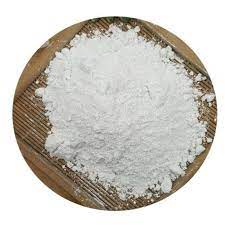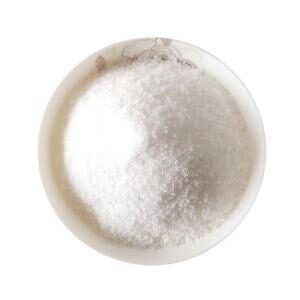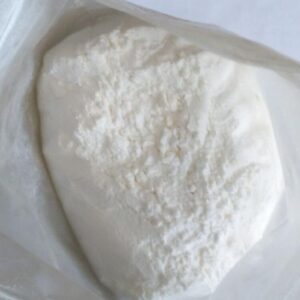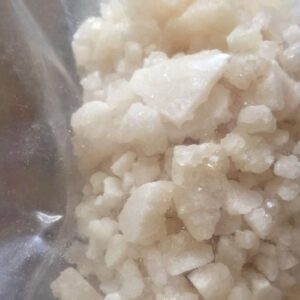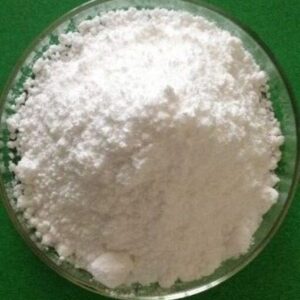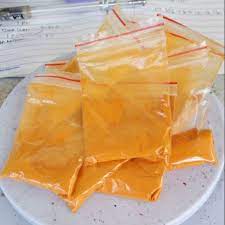Buy factory ADB-FUBINACA powder/CAS 1185282-00-1/ wholesale price
ADB-FUBINACA Powder: Chemical Profile, Forensic Detection, Health Risks, and Global Legal Status
Introduction
ADB-FUBINACA is a synthetic cannabinoid belonging to the indazole-based family of new psychoactive substances (NPS). Originally developed for pharmacological research, this compound later appeared in illicit “herbal incense” or vaping products, often labeled as “legal highs.” Because of its potent activity at CB₁ receptors and severe health effects, ADB-FUBINACA is now controlled in most jurisdictions.
Informational: Chemical Properties and Structure
ADB-FUBINACA is a potent synthetic cannabinoid receptor agonist (SCRA) structurally related to AB-FUBINACA.
Its design incorporates an indazole core, a fluorobenzyl substituent, and an amino acid-derived amide chain, all contributing to high binding affinity.
- IUPAC name: N-(1-amino-3,3-dimethyl-1-oxobutan-2-yl)-1-(4-fluorobenzyl)-1H-indazole-3-carboxamide
- Molecular formula: C₂₁H₂₃FN₄O₂
- Molecular weight: 382.4 g/mol
- CAS number: 1715016-76-4
- Appearance: Off-white crystalline powder
- Solubility: Soluble in organic solvents such as ethanol and methanol; low solubility in water
ADB-FUBINACA acts primarily as a CB₁ receptor agonist, producing effects similar to but much stronger than Δ⁹-THC, the main psychoactive compound in cannabis.
Navigational: Laboratory and Forensic Applications
Although not approved for human or veterinary use, ADB-FUBINACA remains an important reference standard in laboratories conducting:
- Forensic toxicology analysis:
- Detection in biological fluids (blood, urine) using LC-MS/MS or GC-MS methods.
- Identification of metabolites to confirm exposure in forensic casework.
- Chemical profiling:
- Used by analytical chemists for developing mass spectral libraries.
- Supports comparison of seized material to confirm compound identity.
- Academic research:
- Limited, controlled studies explore binding mechanisms at cannabinoid receptors.
- Helps understand structure-activity relationships (SARs) among synthetic cannabinoids.
These applications are licensed and regulated, ensuring that ADB-FUBINACA is handled only by authorized professionals for analytical and educational purposes.
Commercial (Research & Industry Relevance)
While no commercial trade of ADB-FUBINACA for consumer use is legal, there are authorized research suppliers who provide certified analytical standards for:
- Forensic laboratories developing cannabinoid detection methods.
- University programs studying emerging psychoactive substances.
- Regulatory agencies verifying substance composition in seized samples.
All distribution occurs under strict legal control and documentation requirements such as DEA registration (in the U.S.) or Home Office licensing (in the U.K.).
Health and Toxicological Risks
Forensic and medical reports link ADB-FUBINACA exposure to:
- Acute intoxication with symptoms such as tachycardia, seizures, and respiratory depression.
- Psychological disturbances (agitation, hallucinations, confusion).
- Multi-organ failure or fatal overdoses in extreme cases.
Because of its high potency (often <1 mg active dose) and unpredictable composition in illicit products, ADB-FUBINACA represents a significant public health concern.
Transactional: Legal and Regulatory Framework
Global Legal Status
| Region / Country | Regulatory Classification |
|---|---|
| United States | Schedule I controlled substance (DEA) |
| European Union | Controlled under EMCDDA recommendations; prohibited in most member states |
| United Kingdom | Class B substance under the Misuse of Drugs Act |
| Canada | Listed under Schedule II (Controlled Drugs and Substances Act) |
| Australia | Schedule 9 prohibited substance |
| Japan & South Korea | Banned under NPS control regulations |
| United Nations (UNODC) | Included in international control frameworks (2020) |
Researchers or institutions must obtain special licenses for possession, synthesis, or study of ADB-FUBINACA. Commercial suppliers must maintain traceable records and comply with chemical import/export documentation.
Safety and Handling in Laboratory Settings
Because ADB-FUBINACA is active in extremely small quantities, handling requires specialized safety procedures:
- Use in fume hoods or ventilated enclosures.
- Wear gloves, goggles, and lab coats.
- Avoid direct skin contact and inhalation.
- Store in tightly sealed containers under controlled temperature (2–8 °C).
- Dispose of all waste following hazardous chemical disposal regulations.
Laboratory personnel must undergo training in controlled-substance handling and keep detailed usage logs.
Forensic Identification and Detection Methods
Forensic laboratories employ several analytical techniques to detect and confirm ADB-FUBINACA:
- Gas Chromatography–Mass Spectrometry (GC-MS) – separates and identifies compounds based on fragmentation patterns.
- Liquid Chromatography–Tandem Mass Spectrometry (LC-MS/MS) – quantifies trace concentrations in biological matrices.
- Infrared (IR) Spectroscopy – provides structural fingerprinting.
- Nuclear Magnetic Resonance (NMR) – verifies purity and molecular structure for reference standards.
Ongoing research continues to expand metabolite libraries to help forensic agencies detect ADB-FUBINACA use in toxicology reports.
Environmental and Ethical Considerations
Environmental studies indicate that synthetic cannabinoids like ADB-FUBINACA can persist in wastewater and surface water, requiring monitoring to prevent ecological harm.
Ethically, the compound underscores the need for responsible chemical research, prioritizing public health and regulatory cooperation.
Reference Table: Key Data Summary
| Parameter | Details |
|---|---|
| Chemical Name | ADB-FUBINACA |
| IUPAC Name | N-(1-amino-3,3-dimethyl-1-oxobutan-2-yl)-1-(4-fluorobenzyl)-1H-indazole-3-carboxamide |
| Molecular Formula | C₂₁H₂₃FN₄O₂ |
| Molecular Weight | 382.4 g/mol |
| CAS Number | 1715016-76-4 |
| Chemical Class | Synthetic cannabinoid (indazole-based) |
| Appearance | Off-white crystalline powder |
| Solubility | Soluble in methanol, ethanol; low water solubility |
| Detection Methods | GC-MS, LC-MS/MS, IR, NMR |
| Toxicity Profile | High potency; risk of seizures, cardiac issues, fatalities |
| Primary Applications | Forensic reference standard, toxicological research |
| Regulatory Status (U.S.) | DEA Schedule I |
| Storage Conditions | 2–8 °C, dry, sealed container |
| Handling Precautions | Use PPE, ventilated area, avoid exposure |
| Environmental Impact | Persistent in wastewater; requires controlled disposal |
Conclusion
ADB-FUBINACA exemplifies how rapid innovation in synthetic chemistry can create both research opportunities and public-health challenges.
For forensic laboratories, regulators, and scientists, understanding its chemical structure, detection methods, and regulatory status is essential for informed monitoring and safety.
Through strict legal control, ethical research, and international collaboration, institutions can help mitigate risks while advancing the scientific understanding of synthetic cannabinoids.
Keywords
ADB-FUBINACA powder • Synthetic cannabinoid research • Forensic toxicology standards • CB₁ receptor agonist • Legal status of ADB-FUBINACA • Controlled substance reference material • Synthetic cannabinoid detection methods
Buy factory ADB-FUBINACA powder/CAS 1185282-00-1/ wholesale price
Ordering Information:
- Packaging: Typically sold in various quantities; confirm with the supplier.
- Delivery: This can be shipped directly to your location.
- Shipping Options: Ensure you confirm shipping methods and costs with the supplier.
- Storage: Store at -20°C for optimal stability.
Legality:
- United States: ADB-FUBINACA is classified as a Schedule I controlled substance.
- Other Jurisdictions: Not known to be banned in major jurisdictions, but it’s crucial to verify local laws before purchasing.
Side Effects and Risks:
- Potential Effects: Reports suggest ADB-FUBINACA may induce effects similar to cannabis, including euphoria and restful sleep. However, it can also cause adverse effects such as paranoia, altered time perception, and fluctuations in appetite.
- Risks: There have been reports of severe side effects, including fatalities. Caution is advised, and the substance is not intended for human or veterinary use.
Metabolism:
- Metabolic Pathways: Includes alkyl and indazole hydroxylation, terminal amide hydrolysis, glucuronide conjugation, and dehydrogenation.
Technical Data:
- SMILES: O=C(NC(C(N)=O)C(C)(C)C)C1=NN(CC2=CC=C(F)C=C2)C3=C1C=CC=C3
- InChI Code: InChI=1S/C21H23FN4O2/c1-21(2,3)18(19(23)27)24-20(28)17-15-6-4-5-7-16(15)26(25-17)12-13-8-10-14(22)11-9-13/h4-11,18H,12H2,1-3H3,(H2,23,27)(H,24,28)
- InChI Key: ZSSGCSINPVBLQD-UHFFFAOYSA-N
Warnings:
- Not for Human Use: This chemical is not intended for human or veterinary use. It is meant strictly for research purposes.
- Legal and Safety Compliance: Ensure compliance with all relevant laws and safety guidelines.
For accurate pricing and to place an order, contact reputable suppliers who deal with research chemicals. Make sure to review their payment terms, shipping policies, and legal compliance before finalizing any purchase.

